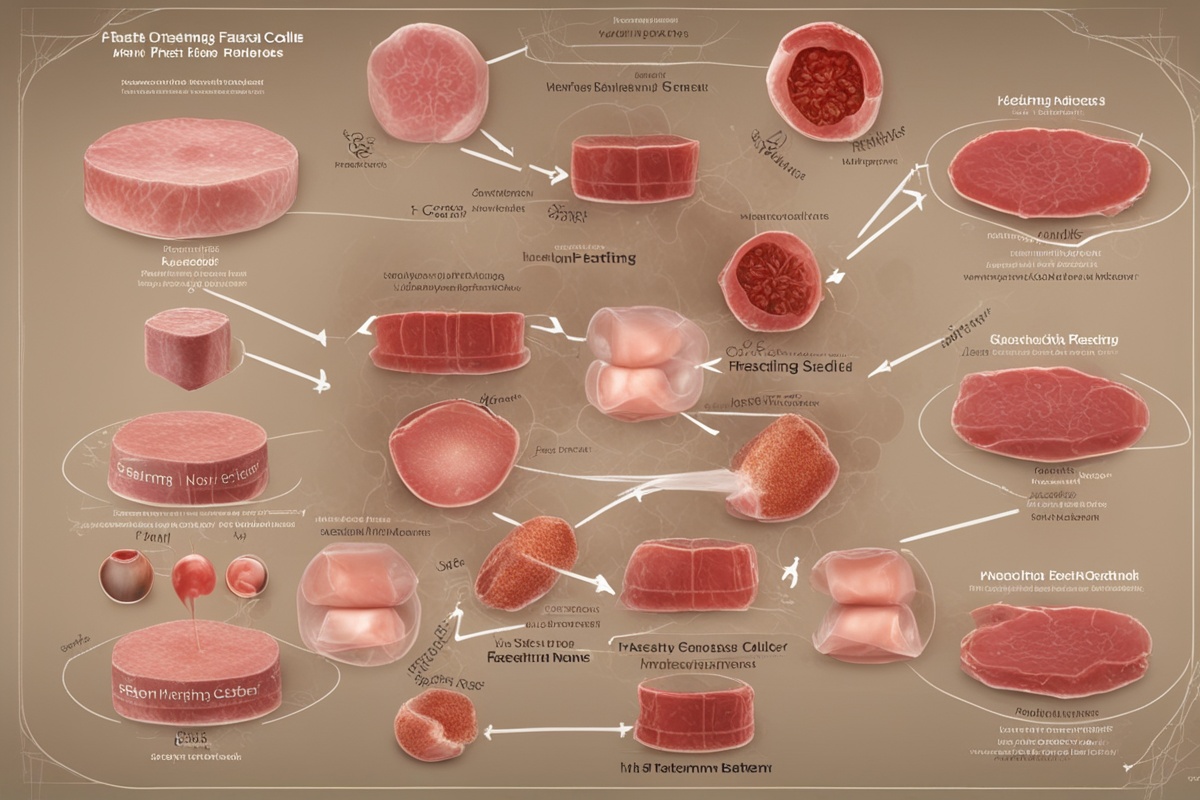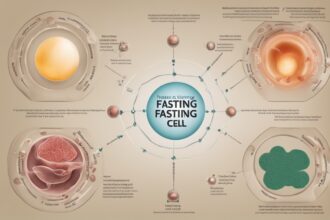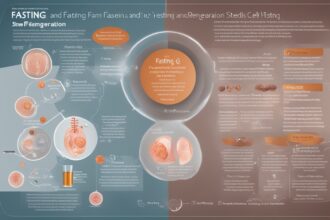Fasting has long been recognized for its potential health benefits, ranging from weight loss to improved mental clarity. However, recent scientific research has uncovered a fascinating connection between fasting and the body’s ability to regenerate at a cellular level. By focusing on boosting regeneration with fasting, we can explore how this ancient practice may unlock the power of stem cells to repair and rejuvenate tissues. In this post, we’ll dive into the science behind fasting, its impact on stem cell activity, and how it can be a game-changer for health and longevity.
The Science Behind Fasting and Cellular Regeneration
Fasting, the voluntary abstinence from food for a specific period, triggers a cascade of biological processes in the body. One of the most significant is autophagy, a cellular “clean-up” mechanism where damaged cells and proteins are broken down and recycled. This process is crucial for maintaining cellular health and is closely linked to regeneration. When we fast, the body shifts into a state of repair, and this is where stem cells come into play. Stem cells are the body’s raw materials—cells that can develop into many different types of specialized cells. Research suggests that fasting may enhance stem cell function, thereby boosting regeneration with fasting as a natural and accessible tool.
During fasting, the body experiences a reduction in nutrient availability, prompting it to prioritize energy efficiency and repair over growth. This metabolic switch not only clears out damaged cells but also stimulates the production and activation of stem cells, which can then differentiate into new, healthy cells to replace the old ones. This process holds promise for everything from tissue repair to slowing the aging process.
How Fasting Enhances Stem Cell Activity
Stem cells are critical for regeneration, as they have the unique ability to self-renew and differentiate into various cell types. Studies have shown that fasting can influence stem cell behavior by altering the body’s hormonal and metabolic environment. For instance, fasting reduces levels of insulin and glucose while increasing ketone bodies—molecules produced during fat breakdown. These changes create a favorable environment for stem cell activation, ultimately boosting regeneration with fasting.
A landmark study conducted on mice demonstrated that prolonged fasting (48–72 hours) led to a significant increase in the regeneration of intestinal stem cells. These cells are responsible for maintaining the gut lining, and their enhanced activity during fasting helped repair damage caused by stress or injury. While human studies are still emerging, the implications are clear: fasting could be a powerful strategy to support the body’s natural repair mechanisms. For more insights on the gut and regeneration, check out our post on Fasting for Gut Health.
Fasting as a Tool for Tissue Repair and Anti-Aging
One of the most exciting applications of boosting regeneration with fasting is its potential to aid in tissue repair and combat aging. As we age, stem cell function naturally declines, leading to slower recovery from injuries and a higher risk of degenerative diseases. Fasting may help counteract this decline by stimulating stem cell renewal and protecting against cellular damage caused by oxidative stress.
For example, intermittent fasting—cycling between periods of eating and fasting—has been shown to improve the function of hematopoietic stem cells, which are responsible for producing blood and immune cells. This could have profound implications for conditions like anemia or immune system disorders. Additionally, fasting’s ability to reduce inflammation (a key driver of aging) further supports its role in promoting longevity. If you’re curious about fasting’s broader anti-aging benefits, explore our article on Intermittent Fasting for Longevity.
Types of Fasting to Boost Regeneration
Not all fasting methods are created equal when it comes to boosting regeneration with fasting. Different approaches can yield varying results depending on individual goals and health conditions. Here are a few popular fasting protocols that have shown promise in enhancing stem cell activity and regeneration:
- Intermittent Fasting (IF): This involves alternating between fasting and eating windows, such as the 16:8 method (16 hours of fasting, 8 hours of eating). IF is sustainable for many and can promote autophagy and stem cell function over time.
- Prolonged Fasting: Fasting for 48–72 hours or more can trigger deeper regenerative processes, as seen in studies on intestinal stem cell renewal. However, this should be done under medical supervision.
- Water Fasting: Consuming only water for a set period can maximize the metabolic switch to ketosis, potentially enhancing stem cell activation. Again, caution and guidance are advised.
Choosing the right fasting method depends on your health status and lifestyle. For beginners, starting with intermittent fasting might be the most accessible way to tap into regeneration benefits. Learn more about starting your fasting journey with our guide on Beginner’s Guide to Intermittent Fasting.
Potential Risks and Considerations
While boosting regeneration with fasting holds immense potential, it’s not without risks. Fasting can be challenging for certain individuals, including those with underlying medical conditions like diabetes, eating disorders, or nutrient deficiencies. Prolonged fasting, in particular, can lead to fatigue, dizziness, or electrolyte imbalances if not done properly. It’s crucial to consult a healthcare professional before embarking on any fasting regimen, especially if you’re new to the practice or have pre-existing health concerns.
Additionally, fasting is not a one-size-fits-all solution. The regenerative benefits observed in animal studies may not fully translate to humans, and more research is needed to establish optimal protocols. Balancing fasting with proper nutrition during eating windows is also essential to avoid nutrient depletion. For tips on maintaining a balanced diet while fasting, see our post on Nutrition During Fasting Windows.
Practical Tips for Incorporating Fasting into Your Routine
If you’re intrigued by the idea of boosting regeneration with fasting, starting small and being mindful of your body’s signals is key. Here are some practical tips to help you incorporate fasting into your routine safely and effectively:
- Start Slow: Begin with a 12:12 intermittent fasting schedule (12 hours of fasting, 12 hours of eating) before progressing to more intensive methods.
- Stay Hydrated: Drink plenty of water during fasting periods to support detoxification and prevent dehydration.
- Listen to Your Body: If you feel unwell or excessively fatigued, break your fast and reassess your approach.
- Combine with a Healthy Diet: Focus on nutrient-dense foods like vegetables, lean proteins, and healthy fats during eating windows to support regeneration.
- Seek Guidance: Work with a nutritionist or doctor, especially for prolonged fasts, to ensure safety.
For additional resources on fasting safely, don’t miss our detailed article on Fasting Safety Tips.
Disclaimer: The information provided in this article is for educational purposes only and should not be considered medical advice. Fasting may not be suitable for everyone, and individual results can vary. Always consult with a qualified healthcare professional before starting any fasting regimen or making significant changes to your diet or lifestyle, especially if you have pre-existing health conditions or are pregnant or breastfeeding.
References
- Mihaylova, M. M., et al. (2018). Fasting Activates Hematopoietic Stem Cell Regeneration. NCBI.
- Cheng, C. W., et al. (2014). Prolonged Fasting Reduces IGF-1/PKA to Promote Hematopoietic-Stem-Cell-Based Regeneration. Cell Stem Cell.
- Yilmaz, Ö. H., et al. (2018). mTORC1 in the Paneth Cell Niche Couples Intestinal Stem-Cell Function to Calorie Intake. Nature.
- Harvard Health Publishing. (2018). Intermittent Fasting: Surprising Update. Harvard Medical School.
- Longo, V. D., & Mattson, M. P. (2019). Fasting: Molecular Mechanisms and Clinical Applications. Ageing Research Reviews.
This content is for informational purposes only and not a substitute for professional advice.






